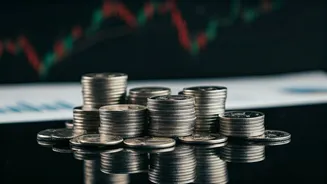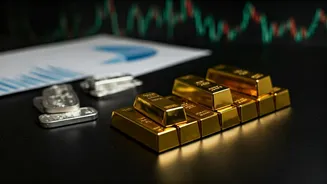Gold Rate Overview
The price of gold, a precious metal, is subject to continuous change. These fluctuations are influenced by various factors, including global economic conditions,
geopolitical events, and currency valuations. The demand and supply dynamics in the market also play a crucial role. For instance, increased investor interest during times of economic uncertainty can push the prices up. Conversely, a strong dollar can make gold more expensive for buyers using other currencies, potentially dampening demand. In India, factors such as the festival season and import duties also add complexity to the pricing structure. Understanding these components is essential for anyone interested in the gold market.
Market Influencers Explained
Several key factors impact the movement of gold prices. One of the most significant is the strength of the US dollar. As the dollar's value rises, gold, which is often priced in dollars, becomes more expensive for international buyers, which may decrease its demand. Geopolitical instability is another important element. Events like conflicts or political tensions usually cause investors to seek safe-haven assets, such as gold, driving its price upwards. Economic data releases, such as inflation figures and interest rate decisions, from major economies can also influence gold prices. High inflation can increase gold's attractiveness as a hedge against the devaluation of currencies, while rising interest rates can make other investments more appealing. India-specific factors, such as import duties and festival demand, further complicate the market dynamics.
Impact on Investors
For investors, gold serves as a diverse portfolio asset. It can provide a hedge against inflation and economic downturns. During times of financial uncertainty, gold often performs well, offering a refuge from market volatility. Investors usually use gold in many different forms, including gold bars, coins, and Exchange Traded Funds (ETFs), allowing them to manage their risk exposure. However, like other investments, gold prices are subject to fluctuations. Therefore, investors should closely monitor market trends and consider their own risk tolerance before investing. A strategic approach to investing in gold often involves diversifying holdings and consulting with financial advisors to gain informed perspectives.
Future Outlook Analysis
Predicting gold prices involves careful consideration of the macroeconomic environment and the global market. Several analysts use various economic indicators, like inflation rates and interest rate policies, to forecast future prices. Potential factors, like upcoming elections in major economies and ongoing global conflicts, will impact the price direction. Furthermore, advancements in technology and changes in consumer behavior can also affect the gold market. Investors and analysts continuously monitor these factors to make informed decisions. It is important to stay informed about global economic changes to be successful.












